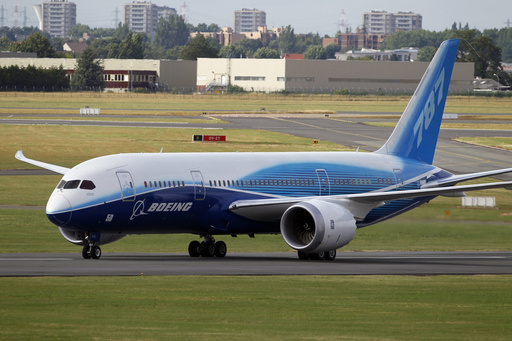Federal safety regulators have mandated inspections of cockpit seats on Boeing 787 Dreamliners following an alarming incident where a jet abruptly went into a dive when the captain’s seat unexpectedly lurched forward, disconnecting the autopilot system. Specific attention is being given to checking the pilot seats for missing or cracked caps covering a critical switch.
Boeing, the aircraft manufacturer, has additionally suspended test flights for a new version of its 777 aircraft after uncovering damage to a structural part located between the engine and the rest of the plane. This particular model has not yet been approved by aviation authorities.
The Federal Aviation Administration (FAA) outlined in an upcoming order that operators of 787s will need to examine both pilot seats for any faults in the caps safeguarding the seat adjustment switch. The directive was prompted by an incident during a flight by Latam Airlines, where the captain’s seat movement caused a disruption to the autopilot system, resulting in a sudden descent and subsequent injuries to passengers.
Apart from the cockpit seat issue, the FAA has also issued a final rule instructing airlines to inspect engine anti-ice system duct inlets for any signs of heat damage on 787s. This rule comes after reports of heat damage connected to faulty seals around the ducts.
Meanwhile, Boeing encountered a setback in gaining FAA certification for its new 777-9 aircraft, due to the discovery of cracks in a part called the thrust link during a test flight in Hawaii. The component, responsible for balancing load between the engines and the aircraft, did not perform as expected during maintenance, leading Boeing to halt flights temporarily for replacement and analysis.
Boeing stated that the thrust link issue impacts the 777-9 specifically, with each plane housing four thrust links for redundancy. This component is exclusive to the 777-9 model and is not utilized in other aircraft in Boeing’s lineup.
The company, headquartered in Arlington, Virginia, assured that they are actively communicating with the FAA and airlines regarding the thrust link matter. Notably, the problem with the part was initially reported by The Air Current.


